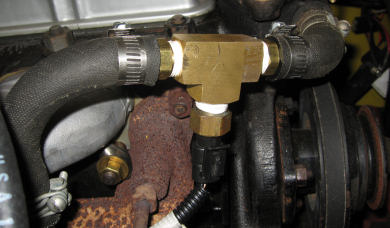71tr
Jedi Warrior
Offline
There have been a number of posts regarding electric fans and aluminum radiators fitted to the TR6. Mounting of the electric fan temp sensor is typically a new bung on the radiator or in-line on one of the radiator hoses. Is there anyway to take advantage of the existing temp sending unit near the thermostat housing? Perhaps substituting the electric fan sensor and wiring it to the temp guage or some dual setup accessing the water channel at the existing location?

 Hi Guest!
Hi Guest!

 smilie in place of the real @
smilie in place of the real @
 Pretty Please - add it to our Events forum(s) and add to the calendar! >>
Pretty Please - add it to our Events forum(s) and add to the calendar! >> 


